
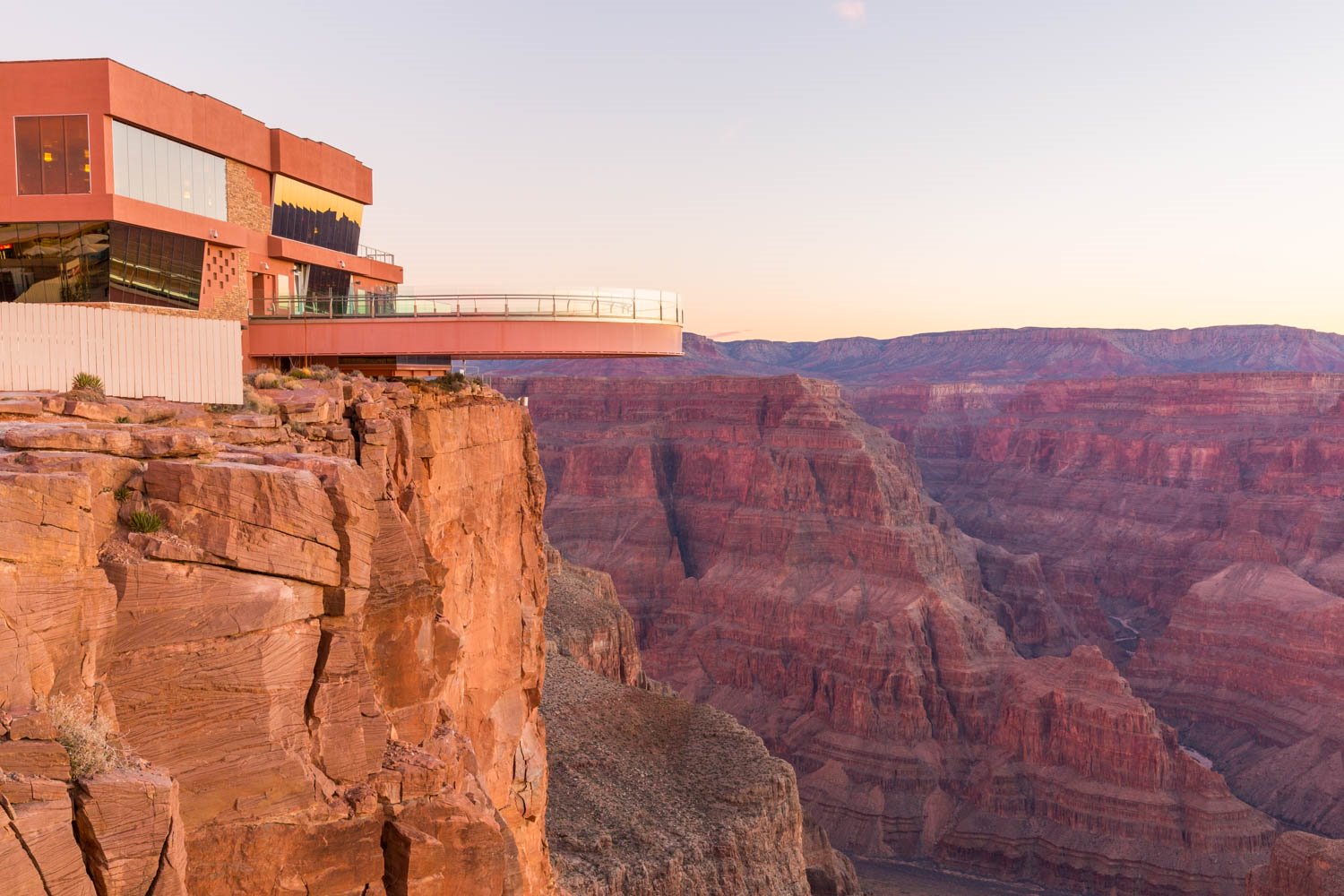
One of the world’s most thrilling cantilever glass bridges is at Grand Canyon West. You can step out on the 10-foot wide, horseshoe-shaped glass bridge extending 70 feet out over the rim of the Grand Canyon. If you dare to look down, you’ll see breathtaking views 4,000 feet to the Canyon floor below.
There’s simply nothing compared to the feeling of walking on air, yet there’s no need to be nervous — Skywalk is strong enough to hold seventy fully loaded 747 passenger jets.
SKYWALK HIGHLIGHTS
- View the Grand Canyon from mid-air
- See the Eagle Rock Formation
- See the Princess and the Horse shadow
- Get professional photographs of your once-in-a-lifetime experience
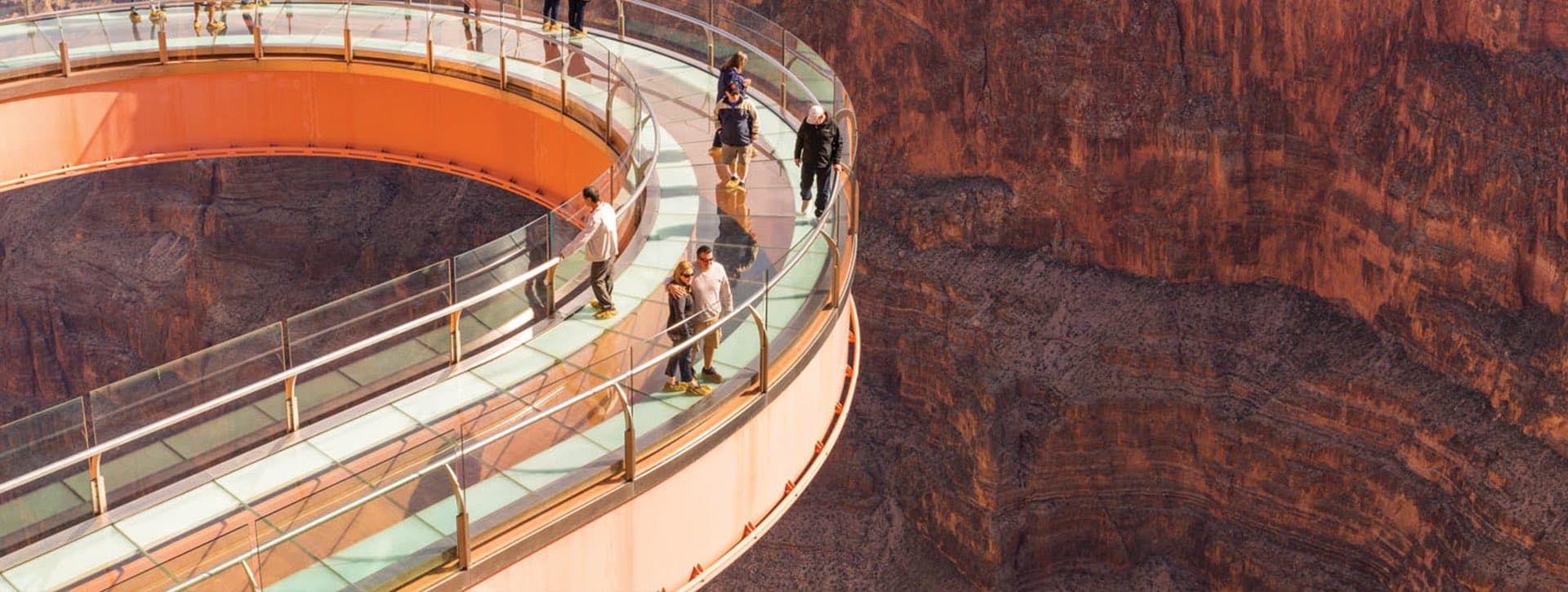

Know Before
You go
- Skywalk is located at Grand Canyon West’s Eagle Point on the Hualapai Reservation and is not affiliated with Grand Canyon National Park.
- Bring the whole family (children of walking age are welcome) and see the Grand Canyon from a whole new perspective.
- When you arrive, you’ll store your personal belongings (no purses, backpacks, cell phones or cameras allowed on Skywalk) in a free locker, and bootie up! • Shoes are required, and booties are used to protect the glass as you walk the sky.
- Professional photographers will be on hand to capture your stroll across Skywalk for treasured souvenirs. Photos can be purchased per printed photo or as a bundle on a USB drive.
- Peak visitation on Skywalk is between 11:00am and 4:00pm Mountain Standard Time. To beat the crowds, we recommend arriving in the morning. The last tickets of the day are sold at 5:30 p.m. mid-March through October and 4:30 p.m. November through early March.
- Skywalk is located at Grand Canyon West. Offsite parking is available with complimentary hop-on, hop-off shuttle service to the Skywalk.
On March 28, 2007, Skywalk opened to the general public. This $30 million modern engineering marvel took four years to build. At that time, Skywalk was the world’s biggest glass cantilever bridge at 70 feet (China’s walkway in Chongqing took that title in 2016 by extending 87.5 feet).
Construction began on this one-of-a-kind glass-bottom bridge in 2004. Engineers employed the same rod and plate method used on the Egyptian pyramids to roll Skywalk out over the Grand Canyon’s edge, creating an unencumbered view from the bridge. Support beams formed the foundation by anchoring deep within the red limestone bedrock of the site, acting as counterweight rods. This allows Skywalk to extend over the canyon’s edge with no direct support from underneath.
Highly skilled craftsman used 1.2 million pounds of steel and glass to build the Skywalk, using glass units that can hold up to 800 people at any given time. The glass bridge can withstand an 8.0 magnitude earthquake, wind speeds up to 100 miles per hour, and can support the weight of seventy-one 747 airplanes. Since its opening, the world-famous structure has welcomed more than 10 million visitors to experience a bird’s eye view of the Grand Canyon.
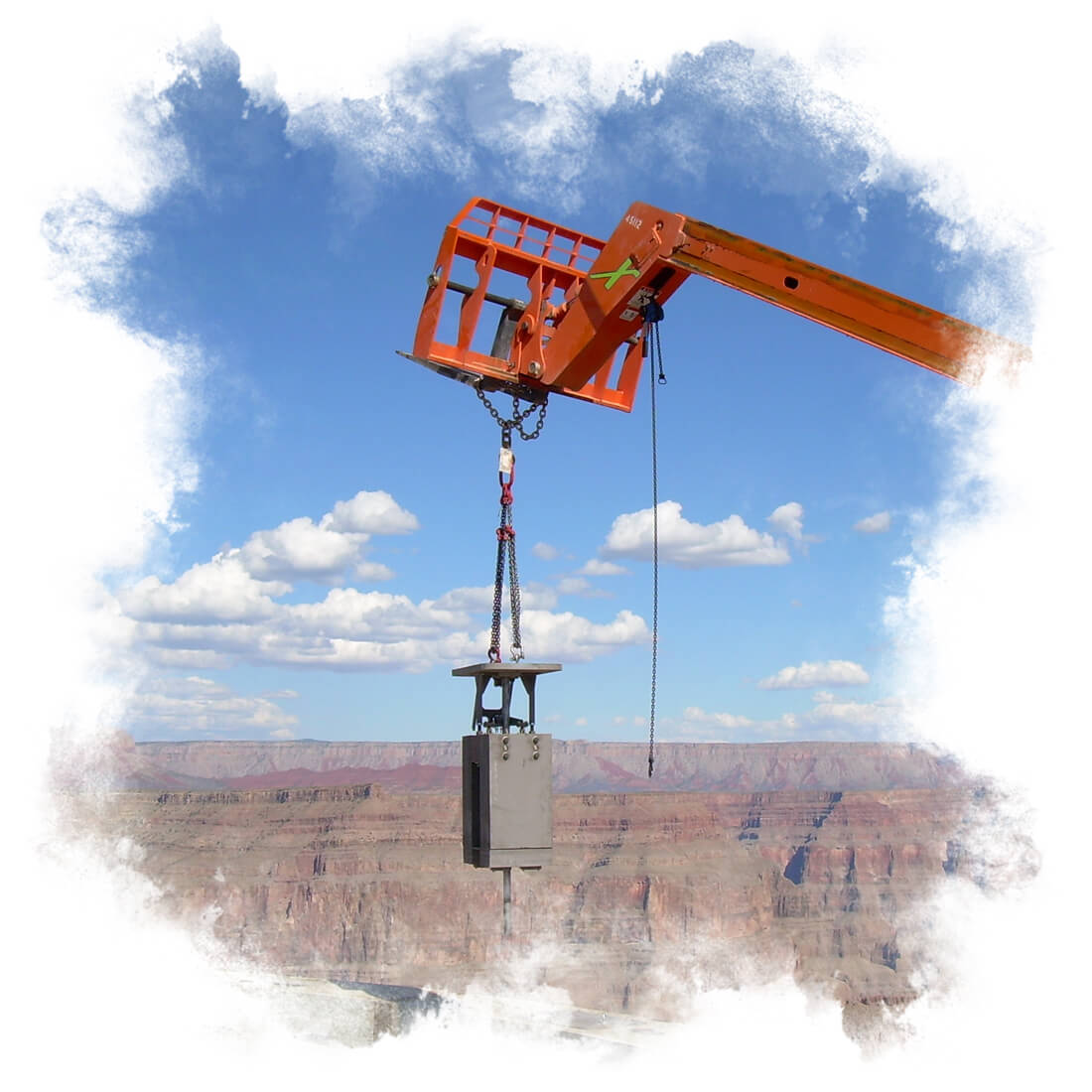
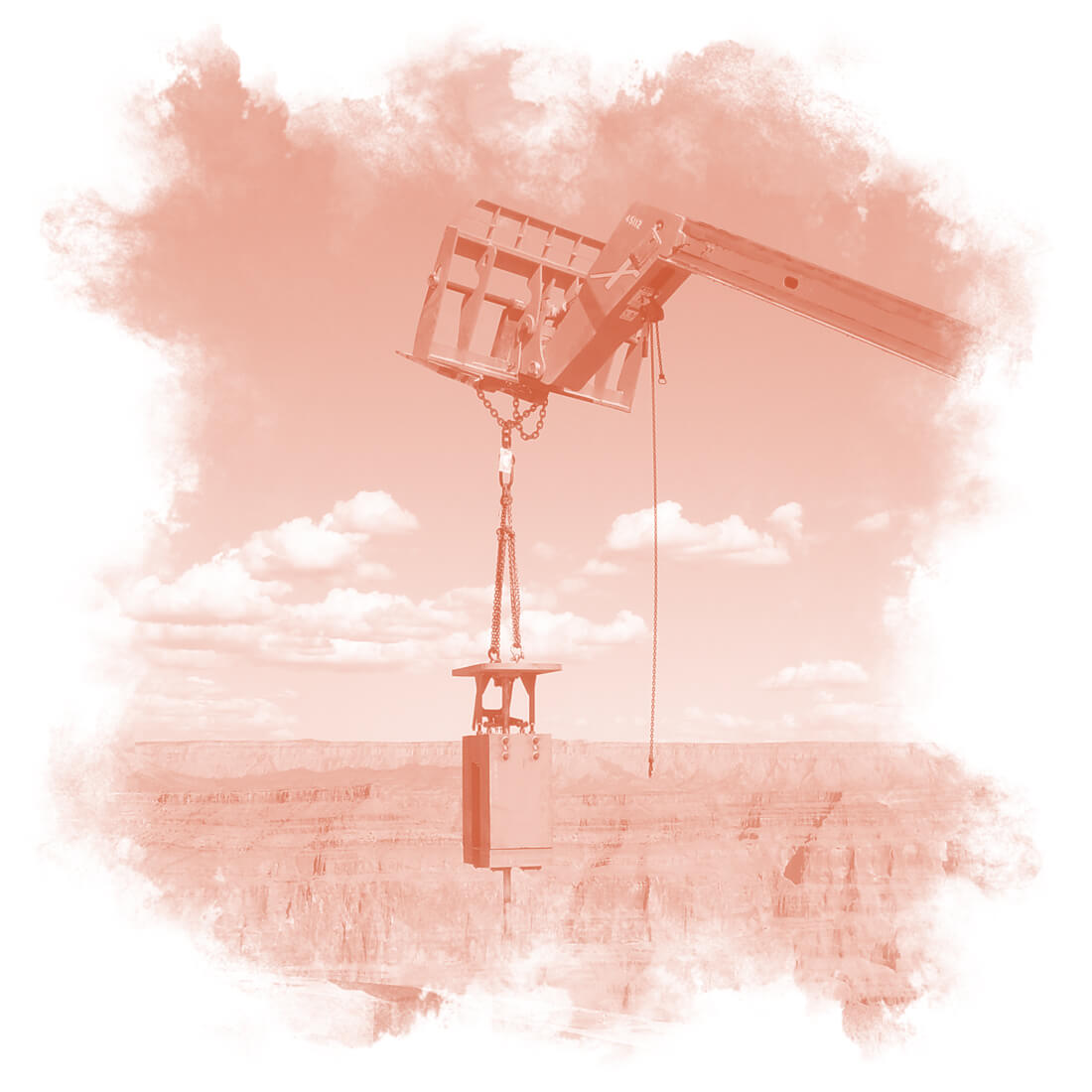
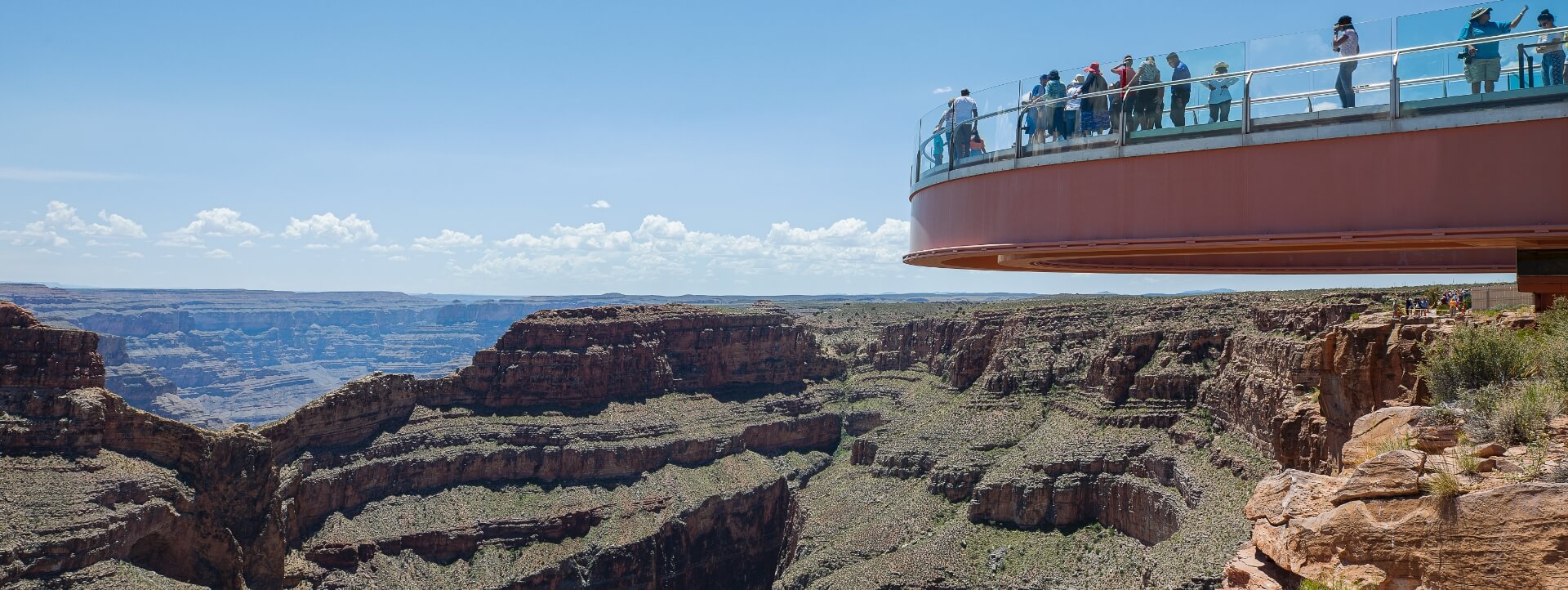
Historical
Significance
At one point, the entity of what is now the Grand Canyon was all submerged underwater. The legend goes there was a big ice comet that landed in Colorado. After millions of years, the comet melted, and the water rushed through the rocks, carving the Grand Canyon. The Hualapai myth says a giant eagle soared the skies before the flooding started and swooped down to save the Hualapai people. This grand eagle flew the Hualapai on his back, depositing the tribespeople along the ledge of the west rim when the flooding stopped. The eagle itself turned into stone, where it remains to this day.

When you visit Eagle Point at Grand Canyon West, you can see the eagle in the stone. While you can see it from around the Grand Canyon, the best place to view it straight on is from the middle of the Skywalk or inside the Sky View Restaurant.
The eagle plays an essential role in Indigenous cultures. For the Hualapai, not only did the eagle save them from the great flood, upon a Hualapai’s death, it flies their spirit to the next world at midnight.

